At Experion Technologies, we empower manufacturers to bridge the physical and digital worlds by delivering next-generation Digital Twin solutions that enhance productivity, resilience, and agility across the production lifecycle.
Today’s manufacturing landscape is marked by unprecedented complexity and rapid transformation. Modern factories are no longer isolated systems they thrive on interconnected machines, real-time analytics, and autonomous workflows that demand seamless coordination and insight.
Among the most powerful tools driving this evolution is the Digital Twin: a dynamic, data-driven virtual counterpart of a physical asset, process, or entire production ecosystem. As manufacturers pursue continuous improvement and operational excellence, the digital twin in manufacturing has emerged as an indispensable enabler delivering predictive maintenance, optimized workflows, and deep visibility that transform how factories operate.
Rather than just adopting new technologies, forward-thinking manufacturers are weaving Digital Twins into the fabric of their operations, pushing the boundaries of what smart manufacturing can achieve.
Understanding Digital Twin Technology
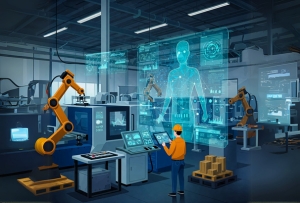 A Digital Twin is a virtual representation of a physical entity, continuously updated with real-time data from sensors, devices, and software systems. This high-fidelity digital replica mirrors the behavior, status, and performance of its physical counterpart, allowing manufacturers to monitor, analyze, and simulate scenarios dynamically.
A Digital Twin is a virtual representation of a physical entity, continuously updated with real-time data from sensors, devices, and software systems. This high-fidelity digital replica mirrors the behavior, status, and performance of its physical counterpart, allowing manufacturers to monitor, analyze, and simulate scenarios dynamically.
How Digital Twin Differs from Traditional Simulation and Modeling
Simulation and modeling have long been foundational tools in manufacturing and engineering. Traditional simulations help engineers predict system behavior under various conditions by using mathematical models and static datasets. While incredibly useful, these simulations have significant limitations: they are generally scenario-specific, one-off analyses that do not reflect real-time operational dynamics.
In contrast, digital twin technology represents a revolutionary leap forward. A Digital Twin is not just a one-time simulation, it’s a live, continuously updated digital counterpart of a physical asset, system, or process that evolves along with its real-world counterpart. This real-time adaptability enables manufacturers to monitor, analyze, and optimize performance dynamically, enabling continuous improvement and predictive decision-making.
Key Differences:
Data Flow:
- Traditional Simulation: Operates using historical or assumed data inputs. The output is limited to specific test cases that are predefined by engineers. Once the scenario has been run, the model must be reconfigured or re-run to test other conditions.
- Digital Twin: Ingests real-time data from sensors, IoT devices, and control systems embedded within the physical asset. This enables the Digital Twin to update its state continuously and reflect the current reality of the system it mirrors.
Interaction:
- Traditional Simulation: Offers one-way interaction. Engineers provide input data, and the simulation outputs results. There is no ongoing feedback loop once the simulation has run.
- Digital Twin: Enables bidirectional interaction not only can engineers and AI algorithms observe system behavior, but they can also send back optimized parameters or control commands to the physical asset, making adjustments in real time. This closes the loop between prediction and action, enabling self-correcting, adaptive systems.
Scope:
- Traditional Simulation: Typically focuses on specific phases of the asset lifecycle (e.g., design optimization or failure mode analysis). These models are often siloed within departments and discarded after use.
- Digital Twin: Spans the entire lifecycle of an asset or process from conceptual design, through manufacturing and operational monitoring, to decommissioning and recycling. It acts as a living model, learning from operational data and feeding insights back into design and maintenance processes, enabling continuous optimization.
Core Components of a Digital Twin:
To fully understand what makes digital twin technology in manufacturing so powerful, it’s important to break down its essential building blocks.
- Physical Entity:
This refers to the actual physical object or system that the Digital Twin models or mirrors. In manufacturing, this could be:
- A single machine (e.g., a CNC milling machine)
- A production line (e.g., an automated assembly process)
- Or even an entire smart factory ecosystem
These physical entities are equipped with sensors and connected devices that stream operational data to the digital environment.
- Virtual Replica:
The virtual twin is a high-fidelity digital model that mirrors the exact behavior, structure, and state of its physical counterpart. It incorporates:
- Physics-based modeling: To accurately replicate how the asset performs under various stresses and operational conditions.
- AI and machine learning algorithms: To predict future performance, simulate failure modes, and optimize parameters continuously.
- Historical data logs: To provide context and improve the accuracy of simulations by learning from past behaviors.
This virtual representation is far more than a static 3D model, it is an intelligent, dynamic system that evolves in tandem with its real-world counterpart.
- Data Synchronization:
At the heart of digital twin for smart manufacturing is the continuous flow of data between the physical entity and its virtual counterpart. This enables:
- Real-Time Monitoring: Operators can visualize current system status, performance metrics, and health indicators live.
- Predictive Analytics: AI engines within the Digital Twin analyze streaming data to detect anomalies, forecast failures, and recommend preventive measures.
- Adaptive Control: Insights gained from the Digital Twin can be used to fine-tune operational parameters or initiate automated responses, such as adjusting machine settings to optimize efficiency or sending alerts for maintenance.
This tight loop of data exchange and analysis ensures that the Digital Twin remains relevant, accurate, and actionable at all times.
Impact of Digital Twin for Smart Manufacturing
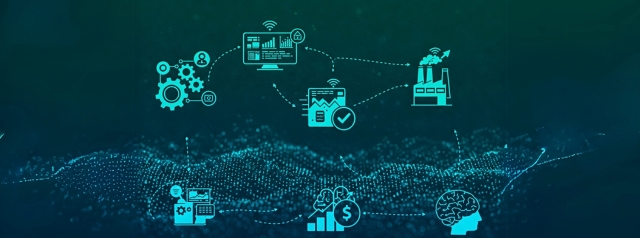
The application of digital twin for manufacturing unlocks transformative benefits, making factories smarter, more responsive, and more sustainable.
- Optimizing Manufacturing Operations
Digital Twins provide deep insights into the status of machines, workflows, and materials, allowing operators to identify inefficiencies, balance loads, and fine-tune processes for optimal performance.
- Real-Time Monitoring and Predictive Maintenance
By constantly monitoring asset health, digital twin technology in manufacturing predicts wear and tear, enabling condition-based maintenance that reduces unexpected downtime and extends equipment lifespan.
- Enhanced Product Lifecycle Management and Quality Control
Digital Twins support end-to-end lifecycle visibility from design validation and manufacturing to customer usage, ensuring continuous improvement and adherence to quality standards.
- Improved Operational Efficiency and Reduced Downtime
Manufacturers can simulate production scenarios and stress-test systems virtually before implementing changes, minimizing disruptions and avoiding costly trial-and-error cycles.
- Cost Savings Through Predictive Maintenance and Resource Optimization
With insights from digital twin technology, companies optimize energy use, material consumption, and manpower allocation, leading to significant OPEX and CAPEX savings.
- Enhanced Decision-Making With Data-Driven Insights
By integrating real-time data with AI, Digital Twins offer actionable insights that help managers make informed decisions quickly, improving responsiveness to market changes and operational risks.
Key Applications of Digital Twin in Manufacturing
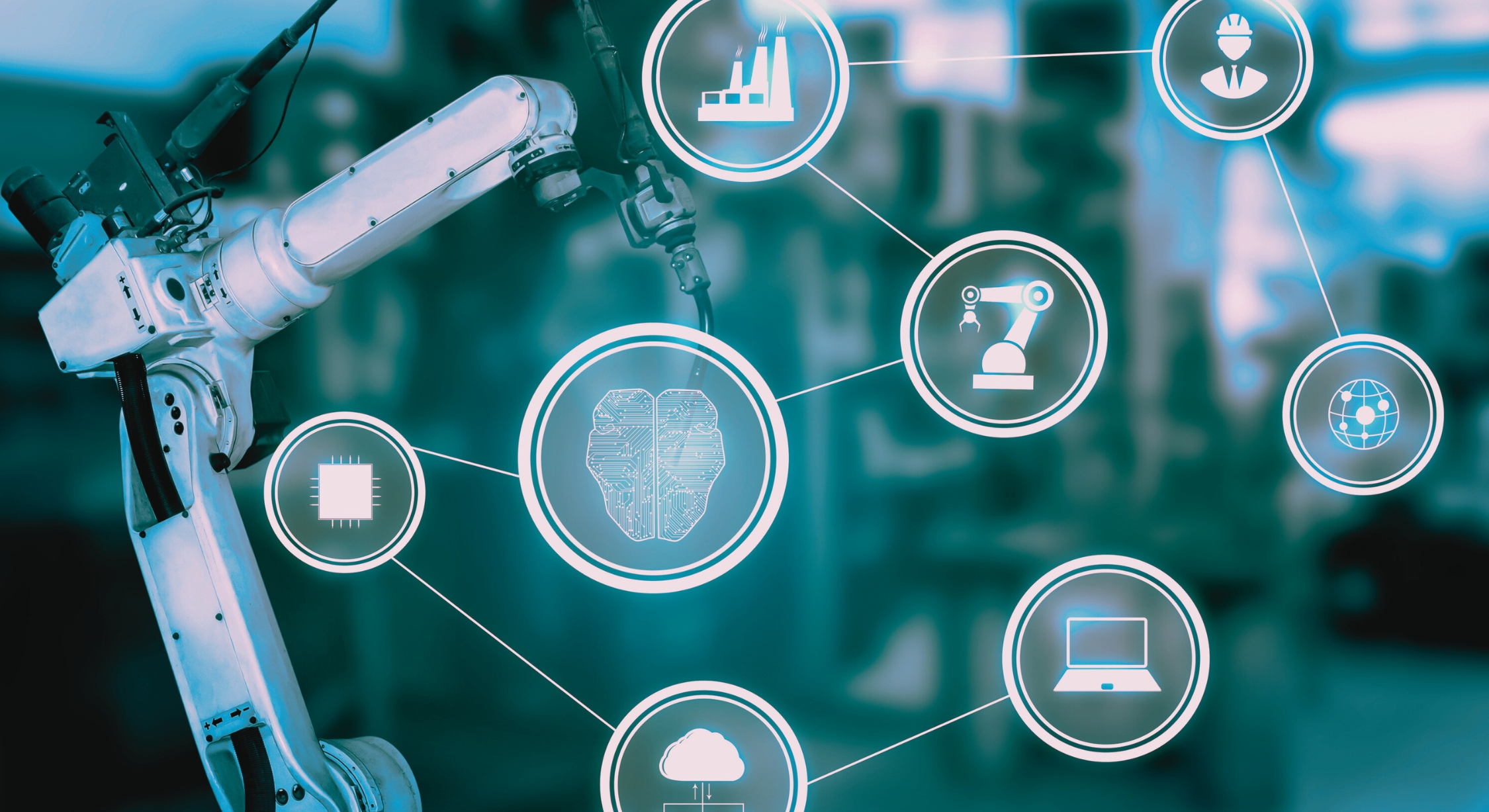 The transformative potential of the digital twin for manufacturing lies in its versatility. Whether it’s optimizing individual processes or revolutionizing enterprise-wide strategies, Digital Twins bring precision, foresight, and adaptability across diverse operational domains.
The transformative potential of the digital twin for manufacturing lies in its versatility. Whether it’s optimizing individual processes or revolutionizing enterprise-wide strategies, Digital Twins bring precision, foresight, and adaptability across diverse operational domains.
- Production Process Optimization
Modern manufacturing demands continuous improvement, and digital twin technology provides a powerful virtual testing ground.
- Real-Time Visualization: Engineers can create high-fidelity digital representations of production lines, allowing for dynamic simulation of workflows, machinery interactions, and production sequences.
- What-If Scenarios: Teams can simulate layout changes, production rate adjustments, or new equipment integration without halting live operations, minimizing risk and cost.
- Bottleneck Detection: By analyzing data from both physical and digital twins, manufacturers can swiftly identify inefficiencies, idle times, or unexpected delays, and resolve them proactively.
- Agile Process Adjustments: Digital Twins empower factories to pivot quickly to demand fluctuations, ensuring optimal throughput and reducing waste.
- Supply Chain and Logistics Management
In a globalized market, supply chain resilience is a key competitive advantage. The digital twin in manufacturing extends beyond the factory floor to include logistics, supplier networks, and distribution chains.
- End-to-End Visibility: Digital Twins provide a real-time overview of inventory levels, warehouse statuses, and in-transit goods, critical for just-in-time (JIT) strategies.
- Dynamic Routing: By mirroring transportation routes, companies can preempt delays (e.g., weather disruptions, border holds) and reroute deliveries dynamically.
- Supplier Performance Monitoring: With integrated data, manufacturers can track supplier KPIs, quality metrics, and lead times, enabling data-backed decisions about vendor reliability.
- Disruption Management: Simulation of disruption scenarios (e.g., factory shutdowns or raw material shortages) helps businesses create robust contingency plans.
- Energy Efficiency and Sustainability Initiatives
Sustainability is no longer optional; it’s a mandate. Digital twin technology in manufacturing plays a pivotal role in driving eco-efficiency.
- Energy Monitoring: Digital Twins track real-time energy consumption of machines, lighting, HVAC systems, and identify opportunities to reduce excess use.
- Carbon Footprint Tracking: Factories can simulate the environmental impact of different production strategies, making it easier to align with green regulations and sustainability goals.
- Predictive Maintenance: Timely interventions reduce energy waste caused by inefficient or failing equipment.
- Compliance Reporting: Automated data collection via Digital Twins simplifies reporting for environmental certifications and audits.
- Workforce Safety and Automation Integration
A safer workplace leads to higher morale, lower turnover, and fewer disruptions.
- Safety Simulations: Digital Twins allow engineers to model hazardous scenarios, enabling them to design safer workflows, escape routes, and emergency protocols.
- Cobots & Automation: By testing human-robot interactions virtually, factories can ensure that collaborative robots (cobots) operate seamlessly and safely alongside workers.
- Wearable Tech Integration: Digital Twins connected with wearable sensors can monitor employee fatigue, heat stress, or ergonomic risks in real-time.
At Experion, we tailor Digital Twin solutions to meet unique operational and compliance requirements. Our expertise in IoT, AI, and high-performance simulations ensures that every deployment scales effectively, integrates smoothly, and maximizes ROI.
Challenges and Considerations in Adopting Digital Twin
While digital twin technology offers transformative benefits, implementing it in manufacturing involves a complex and challenging process. Organizations must navigate several critical challenges to unlock its full potential.
- Data Security and Privacy Concerns
Digital Twins rely on a constant stream of real-time, and often sensitive, data to function effectively.
- Cybersecurity Risks: Continuous connectivity between physical assets and their digital counterparts increases exposure to cyberattacks, ransomware, and data breaches.
- Intellectual Property (IP) Protection: Digital Twins may replicate proprietary processes and technologies, making safeguarding this virtual replica as vital as protecting the physical asset itself.
- Compliance: Adhering to data privacy regulations (e.g., GDPR, CCPA) becomes complex when dealing with cross-border manufacturing networks.
Mitigation Strategies:
- Implementing robust encryption, multi-factor authentication, and access controls.
- Using segmented networks and zero-trust architectures.
- Regularly auditing security protocols and partnering with cybersecurity experts.
- Integration With Existing Manufacturing Systems
Most manufacturing plants operate on a mix of legacy systems, proprietary machinery, and outdated protocols, many of which are not “plug-and-play” compatible with modern digital platforms.
- Legacy Constraints: Older machines might lack IoT sensors or APIs, making real-time data capture difficult.
- Data Silos: Existing ERP, MES, and SCM systems might not communicate seamlessly, creating fragmented data.
- Hardware Retrofitting: Bringing outdated machinery into the digital twin fold may require sensor installation, PLC (Programmable Logic Controller) upgrades, or hardware modifications.
Solutions:
- Leveraging middleware platforms and API gateways to bridge new and old technologies.
- Rolling out pilot projects to phase integration gradually.
- Allocating resources to retrofit vital legacy equipment with IoT enablement kits.
- High Implementation Costs and Technological Complexity
Building a robust digital twin for manufacturing environment is capital-intensive and technologically demanding.
- Upfront Costs: Expenses include IoT infrastructure, simulation software, AI integration, cloud computing resources, and consulting expertise.
- Talent Shortage: Skilled personnel capable of designing, managing, and evolving Digital Twins such as data scientists, simulation engineers, and IoT architects, are in high demand.
- Change Management: Shifting organizational culture and workflows to embrace Digital Twin adoption can face resistance.
Approaches to Ease the Burden:
- Prioritize ROI-centric use cases (e.g., predictive maintenance) for initial implementation to showcase quick wins.
- Explore public-private partnerships and government incentives for Industry 4.0 initiatives.
- Begin with modular deployment by targeting critical assets first and gradually scaling up in phases.
- Invest in training programs to upskill internal teams.
Role of Digital Twins in Industry 4.0
Digital Twins are a cornerstone of Industry 4.0, propelling smart manufacturing into a new dimension of automation and intelligence.
- Connecting Digital Twins With Other Industry 4.0 Technologies
When integrated with IoT sensors, AI algorithms, and cloud computing, Digital Twins become part of a powerful cyber-physical ecosystem that bridges real-time operations with predictive and prescriptive analytics.
- Enabling Cyber-Physical Systems (CPS)
Digital Twins function as the virtual interface in CPS, allowing seamless coordination between physical assets and digital control systems, paving the way for autonomous operations.
- Driving Automation and Autonomous Manufacturing
With Digital Twins, factories can move toward lights-out manufacturing, where processes run autonomously with minimal human intervention, backed by continuous monitoring and AI-driven optimization.
- Enhancing Collaboration and Knowledge Sharing
Digital Twins serve as a single source of truth, enabling cross-functional teams to collaborate on design, production, and maintenance from anywhere in the world, fostering innovation and agility.
Digital Twin Case Studies – Real-World Impact Across Various Areas
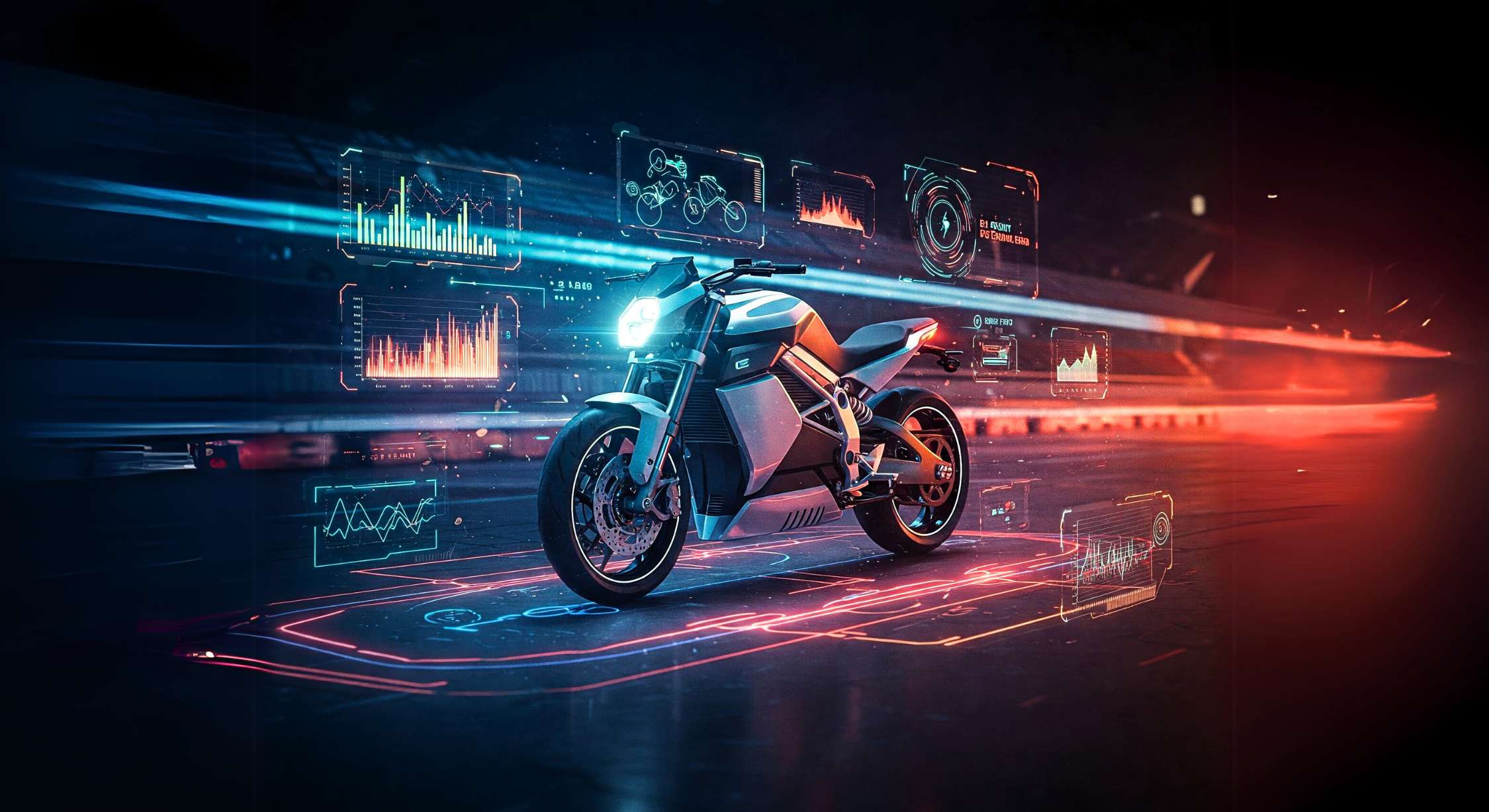
Digital Twin technology is not just a futuristic concept; it’s already delivering tangible benefits across industries. Here’s how digital twin in manufacturing and related sectors are leveraging its transformative potential.
- Predicting Electric Vehicle Range Through Digital Twins
Electric vehicle (EV) range anxiety has long been a concern for consumers and manufacturers alike. By deploying digital twin technology, automakers can create dynamic simulations that mirror real-world driving patterns, varying terrains, and battery performance under diverse environmental conditions.
Impact:
Manufacturers can fine-tune battery management systems, optimize energy recovery during braking, and provide accurate range predictions to consumers.
Outcome:
This boosts customer confidence, reduces warranty claims, and ensures compliance with evolving emissions and energy efficiency regulations.
- Digital Twin for Thermal Battery Management
Thermal management is critical in EVs and energy storage systems. Using AI-enhanced Digital Twins, automotive engineers simulate temperature gradients, cooling efficiency, and thermal runaway risks across different operating conditions.
Impact:
Real-time monitoring ensures optimal battery temperature, extending battery life and preventing overheating even in extreme climates or high-performance use cases.
Outcome:
This proactive approach reduces maintenance costs and increases vehicle safety, a key selling point in the EV market.
- Applying Simulation-Driven Digital Twin Technology to 2-Wheeler Electric Vehicles
For 2-wheeler EVs, where compactness and efficiency are paramount, digital twin for manufacturing solutions help refine design parameters such as aerodynamics, weight balance, and motor efficiency.
Impact:
Engineers can simulate various road conditions, rider behaviors, and mechanical stresses, enabling them to optimize designs before a single prototype is built.
Outcome:
This accelerates time-to-market, cuts R&D costs, and results in vehicles that deliver superior range and durability.
- Improving Product Design Across Industries
Industries like aerospace, heavy machinery, and consumer electronics use digital twin technology to conduct virtual stress tests, fatigue simulations, and performance optimization long before physical production begins.
Impact:
By simulating real-world performance scenarios, engineers gain early insights into potential flaws or design inefficiencies.
Outcome:
This shortens development cycles, reduces physical prototyping costs, and improves product quality and compliance.
- Windmill Farm Control Tower
Renewable energy operators leverage digital twin in manufacturing and infrastructure to monitor wind turbine performance in real-time.
Impact:
Operators can optimize blade pitch, monitor power output, and forecast maintenance needs with high accuracy.
Outcome:
This results in enhanced energy yield, extended equipment lifespan, and lower operational costs crucial for profitability in the renewable sector.
How Experion Can Offer Support
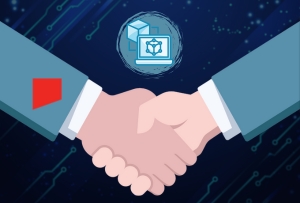
At Experion Technologies, we bridge the gap between theory and practice, delivering customized Digital Twin solutions that turn visionary concepts into operational reality. Our expertise lies in creating integrated ecosystems where Digital Twins act as live, evolving assets that continuously enhance business outcomes.
Unparalleled Converging Technologies
- Advanced Physics-Based Simulation and Design:
We build high-fidelity digital replicas that accurately reflect the physical dynamics and behavior of complex systems. - IoT and Embedded System Integration:
Our team ensures seamless data collection from sensors, devices, and machines creating a real-time feedback loop between the digital and physical worlds. - High-Performance Computing (HPC) & Cloud Platforms:
We deploy large-scale simulations that handle massive data loads, supporting industries like aerospace, automotive, and energy. - AI, Synthetic Data Generation, and Automated Testing:
We enhance predictive power by integrating AI-driven analytics, machine learning pipelines, and virtual test environments that generate actionable insights continuously.
Single Platform Enablement
- End-to-End IoT Data Ingestion and Real-Time Monitoring:
Our platforms collect, process, and analyze data streams for real-time visibility and control of manufacturing assets. - AI-Powered Modeling, AutoML, and MLOps Pipelines:
We accelerate predictive analytics through automated modeling and continuous learning systems that adapt as your operations evolve. - Governance, Collaboration Tools, and Digital Twin Academies:
Experion supports change management, knowledge transfer, and capability building through robust frameworks and learning academies that empower your teams to sustain and evolve your Digital Twin strategy.
With Experion as your technology partner, you can confidently adopt, scale, and innovate with Digital Twin solutions that deliver measurable value today and into the future.
Conclusion
The rapid ascent of Digital Twin For Smart Manufacturing is reshaping how manufacturers approach design, production, and operational excellence. By creating a continuous feedback loop between physical assets and their digital replicas, manufacturers unlock unparalleled agility, efficiency, and intelligence across their value chains.
What was once limited to simulation is now a dynamic, real-time engine of optimization, driving everything from predictive maintenance and supply chain agility to sustainability and workforce safety. Digital twin technology in manufacturing is no longer a futuristic idea; it’s a business imperative for those aiming to thrive in a competitive, fast-changing landscape.
In the long term, the adoption of digital twin for manufacturing will redefine entire industries by enabling cost reductions, carbon footprint minimization, and rapid innovation cycles. Organizations that invest in this technology today will be the frontrunners of tomorrow’s industrial revolution.
As your trusted partner, Experion Technologies is committed to helping you harness the full power of Digital Twin technology, turning complexity into clarity, and vision into operational success.
Key Takeaways
- Digital Twin For Smart Manufacturing bridges the gap between the physical and digital worlds, transforming production operations.
- Digital twin technology, unlike static simulations, delivers dynamic, real-time models that continuously update and learn from new data.
- Core components include the physical asset, virtual replica, and real-time data synchronization, forming a feedback loop that drives precision and agility.
- Benefits include predictive maintenance, enhanced product lifecycle management, and operational efficiency gains that significantly reduce downtime and costs.
- Applications range from production optimization and supply chain management to energy conservation, sustainability compliance, and workforce safety enhancement.
- Digital Twins enable scenario planning and virtual testing, helping manufacturers innovate faster and mitigate risks before physical implementation.
- Challenges such as data security, legacy system integration, and high initial investment require thoughtful planning, phased rollouts, and robust cybersecurity frameworks.
- Digital Twin technology improves sustainability by tracking energy consumption, reducing waste, and optimizing resource allocation in line with green manufacturing goals.
- Integration with IoT, AI, and cloud ecosystems transforms Digital Twins into autonomous decision-making systems that continuously improve production outcomes.
- Incorporating Digital Twins into supply chain management enhances transparency, resilience, and responsiveness to market fluctuations or disruptions.
- Digital Twins play a pivotal role in enabling Industry 4.0’s vision of cyber-physical systems and smart factories, pushing the boundaries of industrial automation.
- The technology supports workforce training and safety by simulating high-risk environments and providing real-time hazard detection insights.
- Manufacturers adopting Digital Twin for manufacturing now are better positioned to achieve long-term competitive advantages in efficiency, sustainability, and innovation.
Experion Technologies offers end-to-end support from simulation and AI modeling to real-time monitoring and predictive analytics ensuring a seamless Digital Twin journey. Get in touch with us today to integrate high-performance computing and AI, enabling scalable and future-proof Digital Twin ecosystems designed for your industry’s unique requirements.

